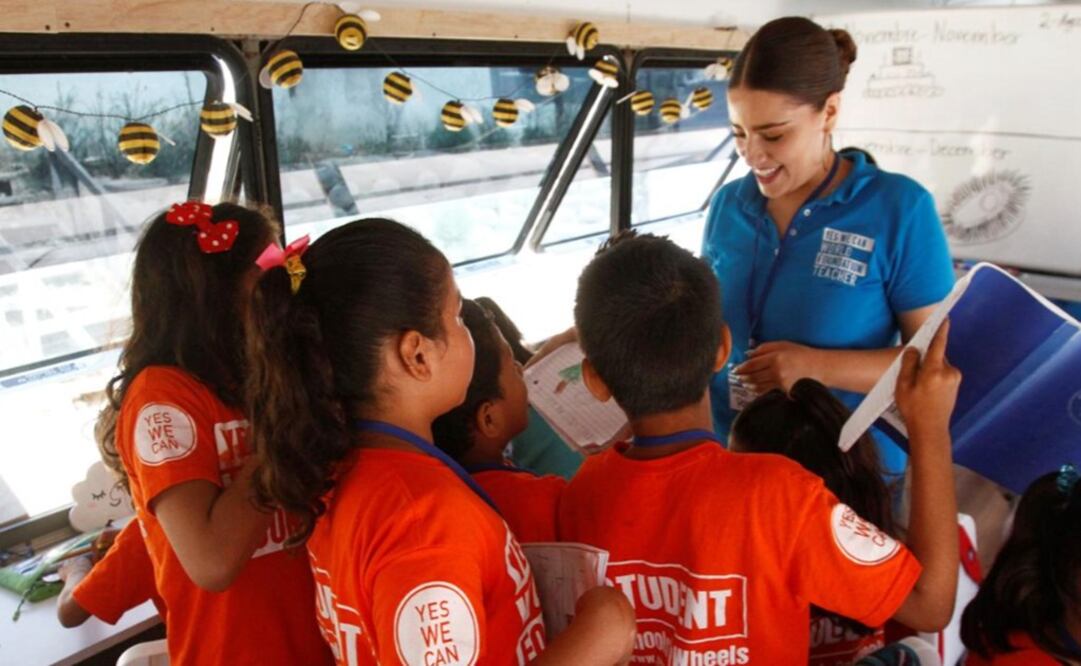Más Información

Dan prisión preventiva a César Duarte, exgobernador de Chihuahua; se queda en el Altiplano por lavado de dinero

Adán Augusto obsequia 17 mil ejemplares de "Grandeza", libro de AMLO, a senadores; serán "regalo navideño" para simpatizantes
The children crammed into the bus and sat in two neat lines, poring over notebooks at desks where once there had been passenger seats. From the overhead baggage bins, a teacher hung their exploits: colored alphabet letters, watercolor paintings.
In the border city of Tijuana just miles from the U.S. border, in a dirt parking lot adjoining a migrant shelter , that bus is offering a rare chance at school to Central American and Mexican children.
For most of the several dozen who have passed through the program since it began in mid-July, education was a distant dream in the weeks or months since their parents decided to uproot and head north to seek refuge or a better life.
Estefania Rebellon
, director of the program called Yes We Can , said it offers specialized bilingual education for children who tend to have low literacy and struggle with social skills . Providing care and security are important too.
“These are children from very dangerous areas, where they have very big issues with trust,” she said. Despite a shooting at a Walmart in El Paso, Texas, over the weekend that left 22 people dead, including eight Mexicans, she said the violence they saw in their home countries was likely worse.
She said it was upsetting that vulnerable people could not count on finding safety in the United States, even to run basic errands such as back-to-school shopping.
“It’s atrocious that there’s the amount of hate in this country that’s been converted into mass shootings. It’s taken innocent lives,” she said.
Rebellon, who also works as an actress in Los Angeles, said she knows what it is like to feel lost as a migrant child . When she was 10 years old, she moved to Miami from Colombia, where her parents had received death threats.
School
became her refuge .
When she saw large groups of Central American migrants arriving in Tijuana late last year, she launched a school program for children in tents at a large shelter.
The “tiny home movement,” an eponymous social movement that advocates for smaller homes, inspired her to try the same concept in an old bus.
Rebellon’s bus used to have a capacity for 55 people but with the old interior torn out, it can now seat 80 children.
The bus has welcomed aboard 37 students ages 5 to 12 since opening and will take in another 20 children in the coming weeks. Yes We Can will also launch a program for teenagers in tents outside, Rebellon said.
The three teachers, accredited in Mexico , have experience working with displaced children in Latin America .
Yes We Can
is working to bring on a fourth teacher who speaks two indigenous languages , in addition to Spanish and English.
Most of the children are from families that are stuck in limbo in Tijuana for weeks or months as they inch higher on a long waitlist to apply for asylum in the United States.
The children mostly come from Honduras, El Salvador, and Guatemala as well as from Mexican states including Guerrero and Michoacán , where locals often fear getting caught in the crossfire of warring drug gangs.
Rebellon
said parents from those cities have told her that teachers often refuse to show up at school for fear of getting killed or kidnapped, and some children had missed school for several months.
If the program can secure enough funding, Rebellon said she would like to expand to Ciudad Juárez and Mexicali , other border cities with surging migrant populations.
“We can be in a bus, in a house, in a boat,” she said. “It’s more about what we teach the children .”
gm
Noticias según tus intereses
[Publicidad]
[Publicidad]













